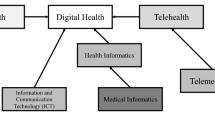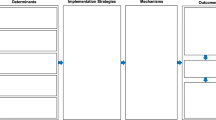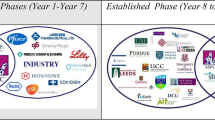Abstract
In this paper we discuss the new generation of German innovation clusters as a model that reflects the paradigm of a supervising and even entrepreneurial role of government. The model evolves alongside a predominant programmatic design that postulates strategy driven clusters or virtual regional organizations consisting out of research laboratories, university departments, and SME. The cluster design implicates the management of strategic implementation, alignments, and the settlement of conflicts as well as the enabling of trust formation. The findings outlined in this paper draw on action research and expert interviews, carried out at the German cluster Campus PlasmaMed 2008–2011 and with stakeholders. The analyzed cluster is funded by German Ministry of Education and Research, BMBF Innovation und State of the Art Research in the New Bundeslander which stands in the tradition of the Entrepreneurial Regions’ Program. The backbone of our research is the cluster’s strategy to develop the interdisciplinary science plasma medicine, a hybrid of low temperature plasma physics and life sciences and to market innovative PlasmaMed products. Innovation policies, programmatic designs, and evolving cluster management schemes are discussed regarding their significance in fostering the current cluster paradigm in German federal science policy. We outline the relevant factors for a transformation of trust-based scientific networks into strategy driven clusters or virtual organisations and provide new criteria for government intervention.


Similar content being viewed by others
Notes
Berlin Institute for Medical Systems Biology (Berlin); Campus PlasmaMed (Greifswald, Mecklenburg Vorpommern); GeoEn (Potsdam, Cottbus; International Water Research Alliance (Dresden); Kompetenzdreieck Optische Mikrosysteme (Jena, Ilmenau, Erfurt); VIERforES (Magdeburg, Kaiserslautern).
Programme objectives: (1). Only the best from the region-innovation based on regional strengths; (2). Innovations: taking action together in a creative and strategic manner; Innovation potentials are set free in regional alliances made up of members from the industrial, scientific, academic and administrative community. (3). Innovations with market orientation: “Entrepreneurial Regions” initiatives must be based on strategically designed concepts and a long-term marketing strategy. This also holds true of R & D projects. The background: entrepreneurial thinking, planning and action are pivotal to the success of regions; (4). The BMBF's aim: regions with clear profiles based on outstanding technological platforms. http://www.bmbf.de/en/1280.php accessed 31.12.2011.
According to the Leibniz Association’s statutes, the director of the research institute INP also holds a chair at the university, a fact which often helps to overcome institutional boundaries.
60 cluster members; 5 research institutes; 10 faculties; 3 disciplines, various industry partners (advisory board).
Plasma medicine ultimately held the potential to change the treatment of wounds; but, it would also affect the medical tools industry, by providing a portfolio of plasma jets for sterilization and healing. In case of its success, plasma medicine would change clinical processes, medical textbooks and the curricula of medical students and paramedics, besides the expected changes in theoretical classification of wounds and biofilm growth patterns.
References
Astor, M., & Broich, B. (2007). Cluster in der Umsetzung. Prognos: Lösungen für die regionale Innovationspolitik. Basel.
Audretsch, D. B., & Albert, N. L. (2011). Entrepreneurship and innovation: Public policy frameworks. JTT: Springer Science+Business Media.
Audretsch, D. B., Keilbach, M. C., & Lehmann, E. E. (2006). Entrepreneurship and economic growth. Oxford: Oxford University Press.
Audretsch, D. B., Zoltan, A., & Robert, S. (Eds.). (2009). Entrepreneurship, growth, and public policy. Cambridge: Cambridge University Press.
Auerswald, P. E., & Branscomb, L. M. (2003). Valleys of death and darwinian seas: Financing the invention to innovation transition in the United States. Journal of Technology Transfer, 28, 227–239.
Bower, J. L., & Christensen, C. M. (1995). Disruptive technologies: Catching the wave. Harvard Business Review, 73(1), 43–53.
Breschi, S., & Malerba, F. (2005). Clusters, networks and innovation. Oxford, NY: Oxford University Press.
Burt, R. S. (2000). The network structure of social capital. Research in Organizational Behaviour, 22, 345–423.
Casper, S., & Murray, F. (2005). Careers and clusters: Analyzing the career network dynamic of biotechnology clusters. Journal of Engineering and Technological Management, 22, 51–74.
Clases, C., Räber, R., & Wehner, T. (2003). Zur Entwicklung der wissensorientierten Kooperation bei Sulzer Innotec. Von der Abteilungsstruktur zu Knowledge Clustern. Wirtschaftspsychologie, 5(3), 109–115.
Collins, H. M. (1992). Changing order. Replication and induction in the scientific practice. Chicago: University of Chicago Press.
Cooke, P. (2009). Regionale Innovationssysteme, Cluster und die Wissensökonomie. S. 87–116 In B. Blättel-Mink & A. Ebner (Hrsg.) (Eds.), Innovationssysteme. Technologie, Institutionen und die Dynamik der Wettbewerbsfähigkeit. Wiesbaden: VS.
Cooke, P., & Leydesdorff, L. (2006). Regional development in the knowledge-based economy: The construction of advantage. Journal of Technology Transfer, 31(1), 5–15.
Daellenbach, U., & Davenport, S. (2004). Establishing trust during the formation of technology alliances. Journal of Technology Transfer, 29(2), 187–202.
Dosi, G. (1982). Technological paradigms and technological trajectories: A suggested interpretation of the determinants and directions of technical change. Research Policy, 11(3), 147–162.
Dosi, G. (1997). Opportunities, incentives and the collective patterns of technological change. Economic Journal, 107, 1530–1547.
Etzkowitz, H., & Leydesdorff, L. (2000). The dynamics of innovation: From national systems and “mode 2” to a triple helix of university-industry-government relations. Research Policy, 29(2), 109–123.
Etzkowitz, H. (2008). The triple helix: University, industry, government. Innovation in action. London: Routledge.
Fridman, G., Friedman, G., Gutsol, A., et al. (2008). Applied plasma medicine. Plasma Processes and Polymers, 5(6), 503–533.
Fuller, S. (2009). Interdisciplinarity. The loss of the heroic vision in the marketplace of ideas. http://www.interdisciplines.org/interdisciplinarity/papers/3. Accessed April 28, 2009.
Gereffi, G., Humphrey, J., & Sturgeon, T. (2005). The governance of global value chains. Review of International Political Economy, 12, 78–104.
Granovetter, M. (2005). The impact of social structure on economic outcomes. Journal of Economic Perspectives, 19(1), 33–50.
Gross, N., & Martin, W. E. (1952). On group cohesiveness. The American Journal of Sociology, 57(6), 546–554.
Herrigel, G., & Zeitlin, J. (2009). Inter-firm relations in global manufacturing: Disintegrated production and its globalization. In G. Morgan (Ed.), The Oxford handbook in comparative institutional analysis. Oxford, NY: Oxford University Press.
Jaffe, A. B., Trajtenberg, M., & Henderson, R. (1993). Geographic localization of knowledge spillovers as evidenced by patent citations. The Quarterly Journal of Economics, 108(3), 577–598.
Ketels, C. H. M. (2006). Michael Porter’s competitiveness framework—Recent learnings and new research priorities. Journal of Industry, Competition and Trade, 6(2), 115–136.
Link, A. N., & Link, J. L. (2005). Government as an entrepreneur. Oxford, NY: Oxford University Press.
Love, J. H., Roper, S., & Mangiarotti, G. (2009). Organizing innovation: Complementarities between cross-functional teams. Technovation, 29(3), 192–203.
Malik, F. (2007). Das A und O des Handwerks (Management: Komplexität meistern). Campus.
Markusen, A. (1996). Sticky places in slippery SPACE: A typology of industrial districts. Economic Geography, 72(3), 293–313.
Martin, R., & Sunley, P. (2006). Path dependence and regional economic evolution. Journal of Economic Geography, 6(4), 395–437.
Miller, W. F. (2004). Fostering and sustaining entrepreneurial regions. International Journal of Technology Management, 28(3–6), 324–335.
Müller-Stewens, G., & Lechner, C. (2011). Strategisches management. Schäffer-Poeschel: Wie strategische Initiativen zum Wandel führen. Stuttgart.
OECD. (2009). Strengthening entrepreneurship and economic development in East Germany: Lessons from local approaches. Report (March).
Porter, M. E. (1980). Competitive strategy. Cambridge: Harvard University Press.
Porter, M. E. (1996). What is strategy? Harvard business review, November–December, 61–78. The value chain.
Reichert, S. (2006). The rise of knowledge regions: Emerging opportunities and challenges for universities. Brussels: European University Association.
Röpke, J. (1998). The Entrepreneurial University innovation, academic knowledge creation and regional development in a globalized economy.
Scott, J. (1987). Social network analysis. London: Sage.
Slaughter, S., & Leslie, L. L. (1997). Academic capitalism: Politics, policies, and the Entrepreneurial University. Baltimore, MD: The Johns Hopkins University Press.
Treado, C. (2010). Pittsburgh’s evolving steel legacy and the steel technology cluster. Cambridge Journal of Regions, Economy and Society, 2010(3), 105–120.
Tushman, M. L., & Scanlan, T. J. (1981). Boundary spanning individuals: Their role in information transfer and their antecedents. Academy of Management Journal, 24, 289–305.
Author information
Authors and Affiliations
Corresponding author
Rights and permissions
About this article
Cite this article
Gebhardt, C. The making of plasma medicine. Strategy driven clusters and the emerging roles of cluster management and government supervision. J Technol Transf 38, 401–414 (2013). https://doi.org/10.1007/s10961-012-9245-z
Published:
Issue Date:
DOI: https://doi.org/10.1007/s10961-012-9245-z
Keywords
- Plasma medicine
- Cluster management
- Science policy
- Regional innovation
- Strategy driven cluster
- Innovation policy
- Innovation
- Entrepreneurial government




